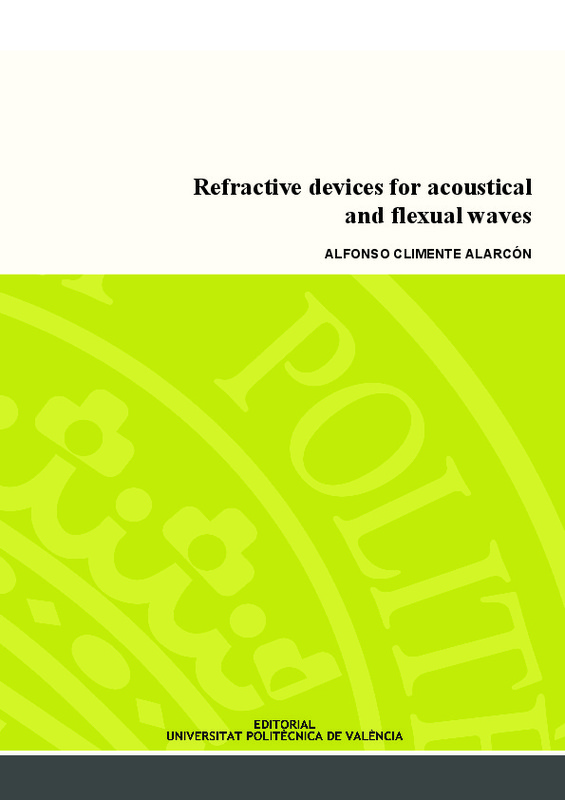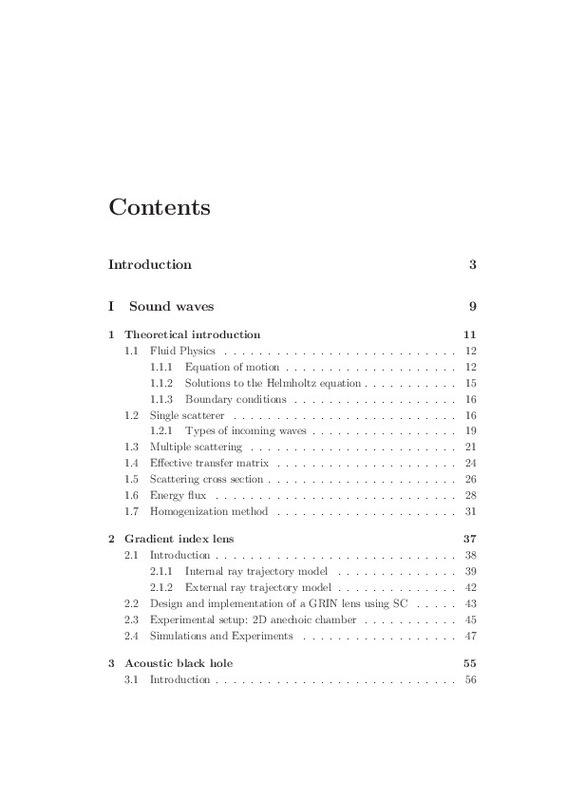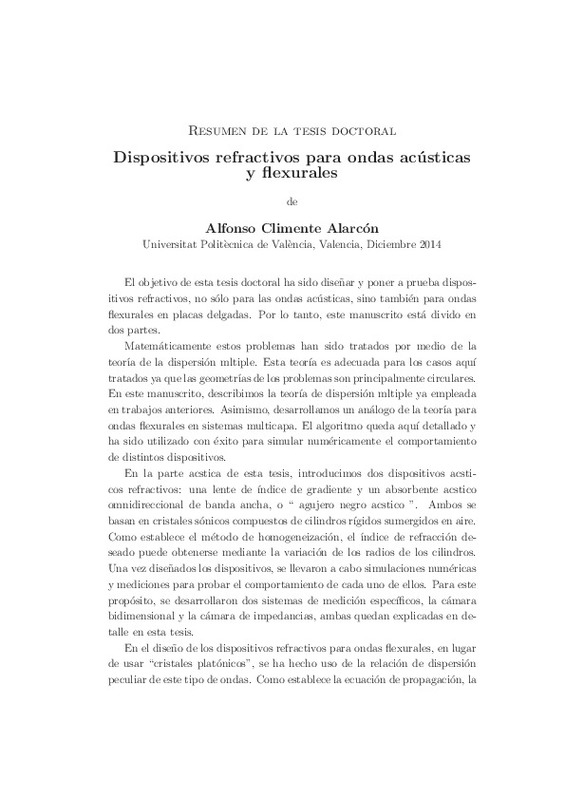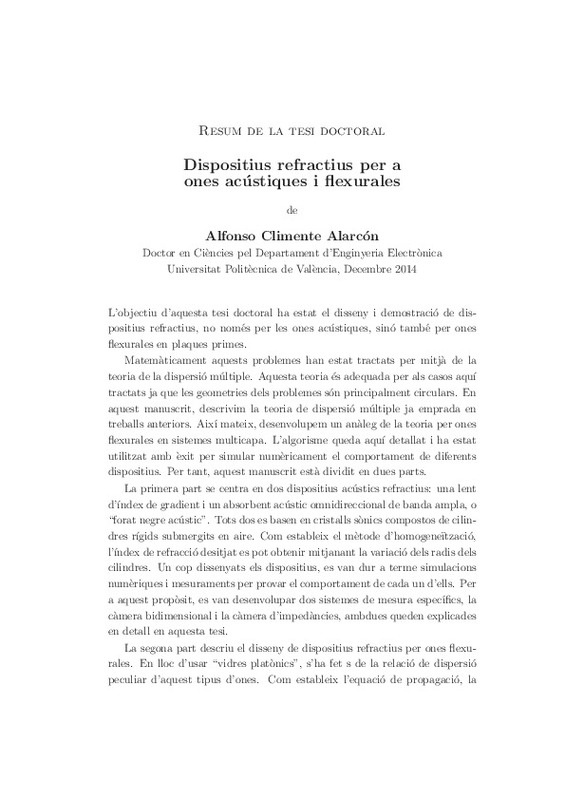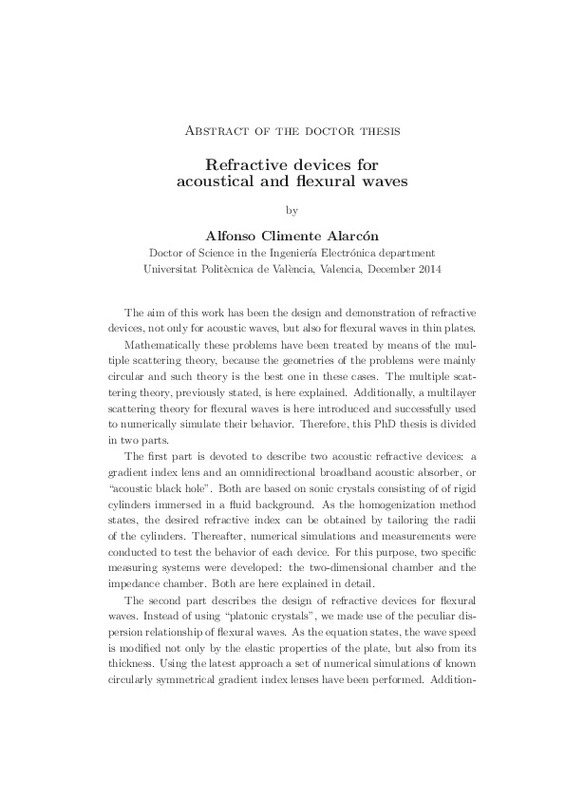|
Resumen:
|
The aim of this work has been the design and demonstration of refractive
devices, not only for acoustic waves, but also for flexural waves in thin plates.
Mathematically these problems have been treated by means of the ...[+]
The aim of this work has been the design and demonstration of refractive
devices, not only for acoustic waves, but also for flexural waves in thin plates.
Mathematically these problems have been treated by means of the multiple
scattering theory, because the geometries of the problems were mainly
circular and such theory is the best one in these cases. The multiple scattering
theory, previously stated, is here explained. Additionally, a multilayer
scattering theory for flexural waves is here introduced and successfully used
to numerically simulate their behavior. Therefore, this PhD thesis is divided
in two parts.
The first part is devoted to describe two acoustic refractive devices: a
gradient index lens and an omnidirectional broadband acoustic absorber, or
“acoustic black hole”. Both are based on sonic crystals consisting of of rigid
cylinders immersed in a fluid background. As the homogenization method
states, the desired refractive index can be obtained by tailoring the radii
of the cylinders. Thereafter, numerical simulations and measurements were
conducted to test the behavior of each device. For this purpose, two specific
measuring systems were developed: the two-dimensional chamber and the
impedance chamber. Both are here explained in detail.
The second part describes the design of refractive devices for flexural
waves. Instead of using “platonic crystals”, we made use of the peculiar dispersion
relationship of flexural waves. As the equation states, the wave speed
is modified not only by the elastic properties of the plate, but also from its
thickness. Using the latest approach a set of numerical simulations of known
circularly symmetrical gradient index lenses have been performed. Additionally, an omnidirectional broadband insulating device for flexural waves has
been designed. It consist of a well-like thickness profile in an annular region
of the plate, that mimics the combination of an attractive and repulsive potentials.
The waves are focused at its bottom and dissipated by means of
an absorptive layer placed on top. Numerical simulations are here presented
and discussed.
Finally, we present an in-plane flexural resonator, consisting of a hole in
a thin plate traversed by a beam. Here, a closed form of the transfer matrix
is obtained by coupling the Kirchhoff-Love and the Euler-Bernoulli motion
equations. Numerical simulations, tested against a commercial finite element
simulator, prove its efficiency
[-]
|






